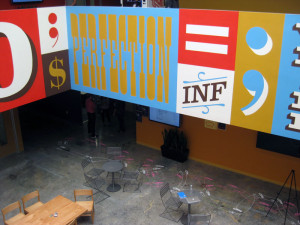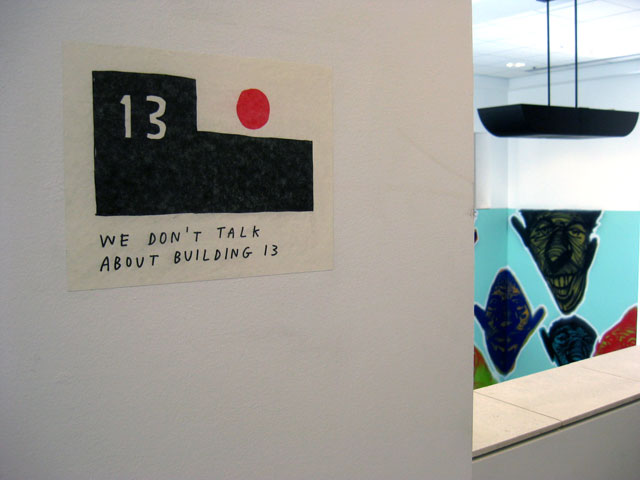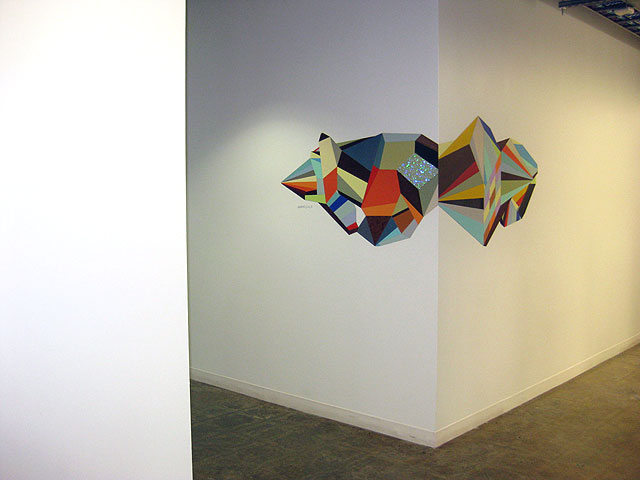Say what you will about Facebook, the company knows how to make an impression. Its headquarters is spectacularly located on the Menlo Park shore of the Dumbarton Bridge, surrounded by salt flats and the San Francisco Bay. The company’s stand-alone, self-made address, One Hacker Way, tells you everything you need to know from the outside about its attempts to subvert a traditional corporate identity. Inside, art is everywhere.
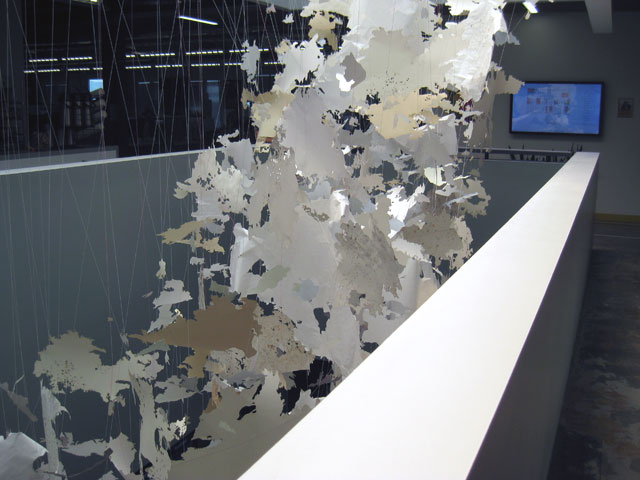
I recently toured Facebook’s Artist-in-Residence (AIR) program with director Drew Bennett to see how artists fit into this new corporate counterculture. As with the online experience, there was much to “like,” much to ignore and still much to consider. The new Frank Gehry-designed offices, called Facebook West, under construction across the street offered a provocative first image.
In one swift decade, Facebook has become so ubiquitous as to defy preamble about its significance in 21st century culture; in all likelihood, you will read this article after seeing it on Facebook. I once saw teenagers ecstatically posing for pictures in front of the parking lot sign — a symbol of rock star success for the digital age. But as well as one might think they know Facebook from the online experience, it is surprising to find that the real life atmosphere is quite different. Whereas the online experience has moments of feeling controlled or regimented, the corporate campus is designed around shared spaces and connectivity. Large-scale site-specific artworks throughout the offices contribute to an atmosphere of polished rebellion.
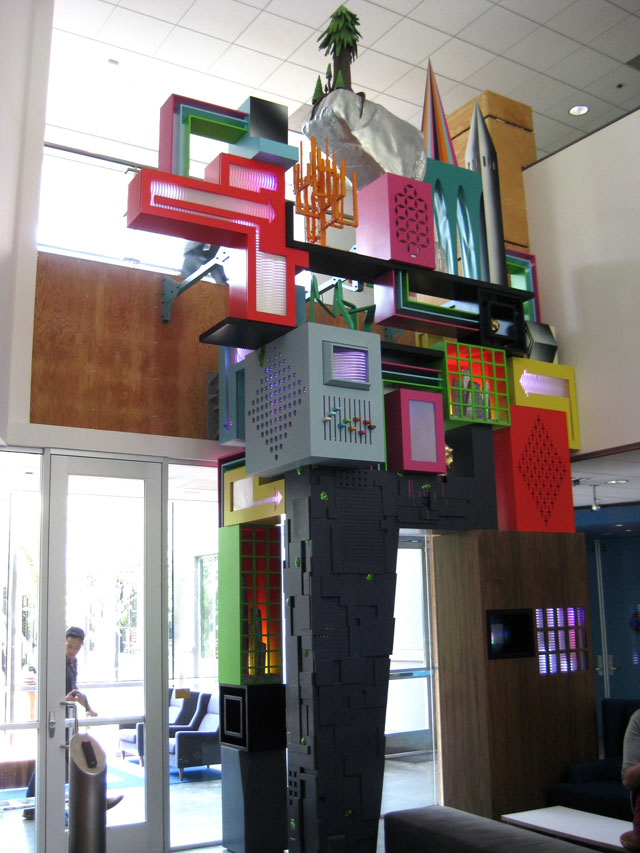
In 2012, artist Drew Bennett was invited by then-Facebook designers Ben Barry and Everett Katigbak to create an official artist-in-residence (AIR) program for the Menlo Park headquarters; they worked together previously when Bennett made work for Facebook. Barry, once known as Facebook’s Minister of Propaganda, and Katigbak had previously established a guerrilla printmaking studio within the company and published compelling, rebellion-infused broadsheets to post around campus, introducing a whiff of urban energy to Silicon Valley’s serial beigeness. (One early print featured the question: “What would you do if you weren’t afraid?”) This experimental print studio eventually became Facebook’s Analog Research Lab, a space for artists and employees to play with different printmaking techniques, simply for the sake of experimentation. A full service wood shop extends these options.

Facebook’s early interest in the street art aesthetic is well documented in the story of muralist David Choe, who accepted payment for office paintings in the form of stock options. A few years later his stock was worth some $200 million after the company went public in 2012; over night Choe became one of the wealthiest artists in the world. Today a Choe diptych presides over the headquarters’ reception area.
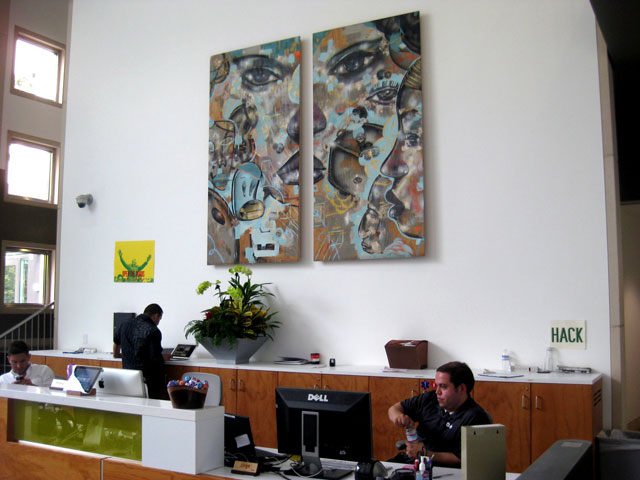
Now in its third season after being launched by Bennett, the official AIR program has invited 28 artists to create site-specific commissions in Menlo Park, with additional artists creating works for the New York office. Many others are considered part of the “pre-official program.”
